
- OpenShift Tutorial
- OpenShift - Home
- OpenShift - Overview
- OpenShift - Types
- OpenShift - Architecture
- OpenShift - Environment Setup
- OpenShift - Basic Concept
- OpenShift - Getting Started
- OpenShift - Build Automation
- OpenShift - CLI
- OpenShift - CLI Operations
- OpenShift - Clusters
- OpenShift - Application Scaling
- OpenShift - Administration
- OpenShift - Docker and Kubernetes
- OpenShift - Security
- OpenShift Useful Resources
- OpenShift - Quick Guide
- OpenShift - Useful Resources
- OpenShift - Discussion
OpenShift - Types
OpenShift came into existence from its base named OpenShift V2, which was mainly based on the concept of gear and cartridges, where each component has its specifications starting from machine creation till application deployment, right from building to deploying the application.
Cartridges − They were the focal point of building a new application starting from the type of application the environment requires to run them and all the dependencies satisfied in this section.
Gear − It can be defined as the bear metal machine or server with certain specifications regarding the resources, memory, and CPU. They were considered as a fundamental unit for running an application.
Application − These simply refer to the application or any integration application that will get deployed and run on OpenShift environment.
As we go deeper in the section, we will discuss on different formats and offerings of OpenShift. In the earlier days, OpenShift had three major versions.
OpenShift Origin − This was the community addition or open source version of OpenShift. It was also known as upstream project for other two versions.
OpenShift Online − It is a pubic PaaS as a service hosted on AWS.
OpenShift Enterprise − is the hardened version of OpenShift with ISV and vendor licenses.
OpenShift Online
OpenShift online is an offering of OpenShift community using which one can quickly build, deploy, and scale containerized applications on the public cloud. It is Red Hat’s public cloud application development and hosting platform, which enables automated provisioning, management and scaling of application which helps the developer focus on writing application logic.
Setting Up Account on Red Hat OpenShift Online
Step 1 − Go to browser and visit the site https://manage.openshift.com/
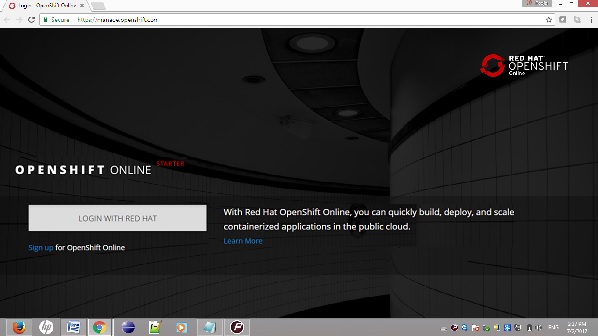
Step 2 − If you have a Red Hat account, login to OpenShift account using the Red Hat login ID and password using the following URL. https://developers.redhat.com
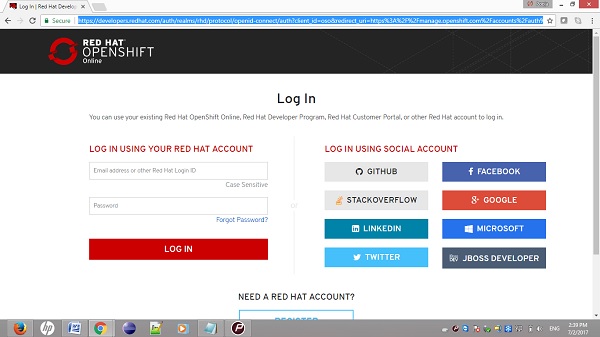
Step 3 − If you do not have a Red Hat account login, then sign up for OpenShift online service using the following link.
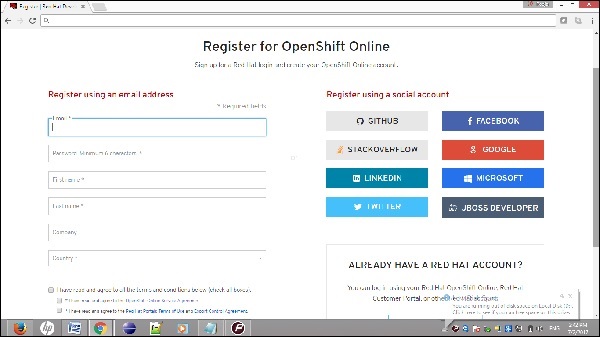
After login, you will see the following page.
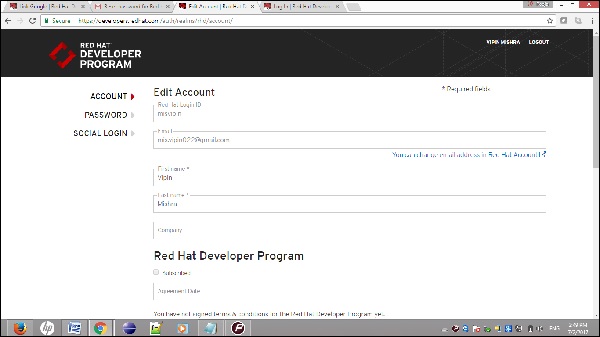
Once you have all the things in place, Red Hat will show some basic account details as shown in the following screenshot.
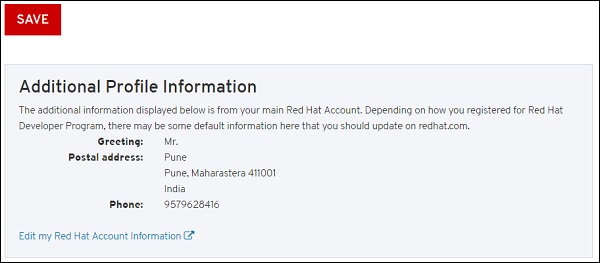
Finally, when you are logged in, you will see the following page.

OpenShift Container Platform
OpenShift container platform is an enterprise platform which helps multiple teams such as development and IT operations team to build and deploy containerized infrastructure. All the containers built in OpenShift uses a very reliable Docker containerization technology, which can be deployed on any data center of publically hosted cloud platforms.
OpenShift container platform was formally known as OpenShift Enterprises. It is a Red Hat on-premise private platform as service, built on the core concept of application containers powered by Docker, where orchestration and administration is managed by Kubernetes.
In other words, OpenShift brings Docker and Kubernetes together to the enterprise level. It is a container platform software for enterprise units to deploy and manage applicants in an infrastructure of own choice. For example, hosting OpenShift instances on AWS instances.
OpenShift container platform is available in two package levels.
OpenShift Container Local − This is for those developers who wish to deploy and test applications on the local machine. This package is mainly used by development teams for developing and testing applications.
OpenShift Container Lab − This is designed for extended evaluation of application starting from development till deployment to pre-prod environment.
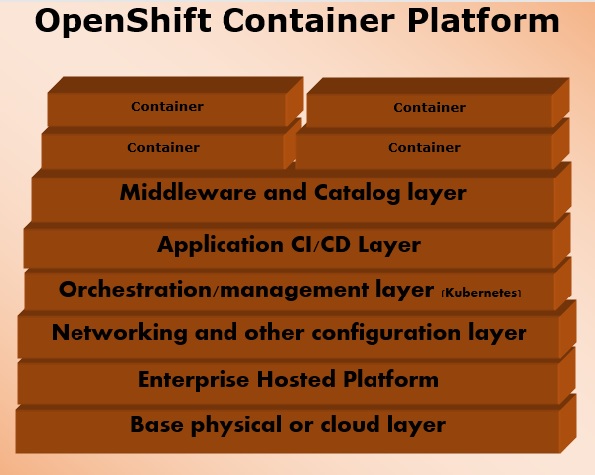
OpenShift Dedicated
This is another offering added to the portfolio of OpenShift, wherein there is a customer choice of hosting a containerized platform on any of the public cloud of their choice. This gives the end user a true sense of multi-cloud offering, where they can use OpenShift on any cloud which satisfies their needs.
This is one of the newest offering of Red Hat where the end user can use OpenShift to build test deploy and run their application on OpenShift which is hosted on cloud.
Features of OpenShift Dedicated
OpenShift dedicated offers customized solution application platform on public cloud and it is inherited from OpenShift 3 technology.
Extensible and Open − This is built on the open concept of Docker and deployed on cloud because of which it is can expend itself as and when required.
Portability − As it is built using Docker, the applications running on Docker can easily be shipped from one place to the other, where Docker is supported.
Orchestration − With OpenShift 3, one of the key features of container orchestration and cluster management is supported using Kubernetes which came into offering with OpenShift version 3.
Automation − This version of OpenShift is enabled with the feature of source code management, build automation, and deployment automation which makes it very popular in the market as a Platform as a Service provider.
Competitors of OpenShift
Google App Engine − This is Google’s free platform for developing and hosting web applications. Google’s app engine offers fast development and deployment platform.
Microsoft Azure − Azure cloud is hosted by Microsoft on their data centers.
Amazon Elastic Cloud Compute − They are built-in services provided by Amazon, which help in developing and hosting scalable web applications on cloud.
Cloud Foundry − is an open source PaaS platform for Java, Ruby, Python, and Node.js applications.
CloudStack − Apache’s CloudStack is a project developed by Citrix and is designed to become a direct competitor of OpenShift and OpenStack.
OpenStack − Another cloud technology provided by Red Hat for cloud computing.
Kubernetes − It is a direct orchestration and cluster management technology built to manage Docker container.